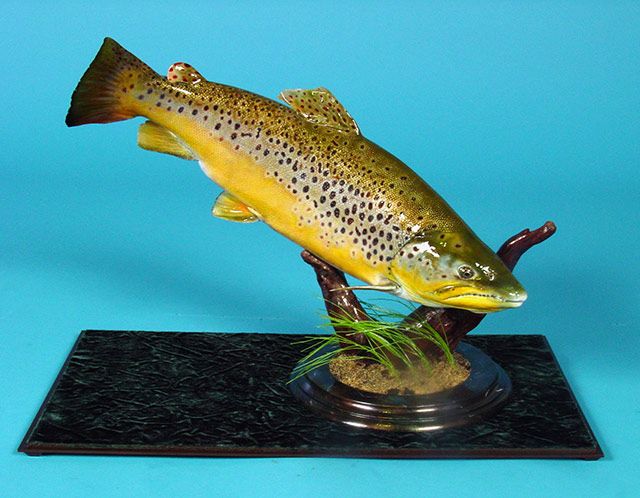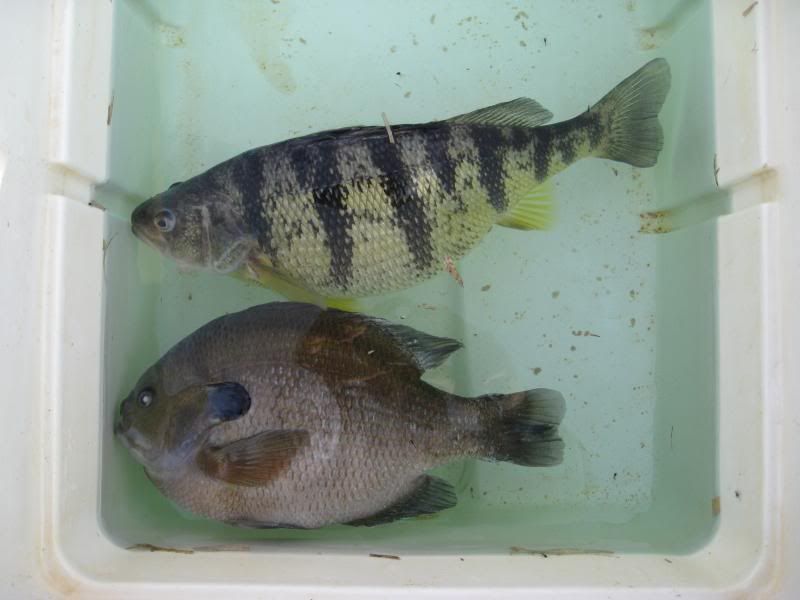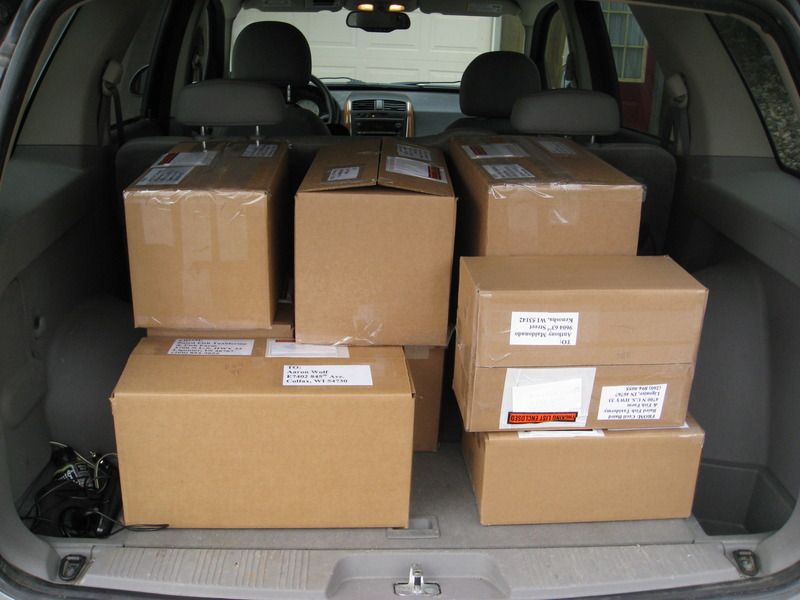
I was asked to share this, and due to the fact that I've made some improvements since I first posted my system, I thought I would start another thread. I've gleaned various ideas and pieces of equipment off the Internet, and most of all my first and best source of info was
Steven VanGorder's book Small Scale Aquaculture. The book is about $20.00 on Amazon and worth 10 X that much!
I hope the moderators and Bob don't mind, as I think this is something that can be of use to pond owners -- especially those of you that think out of the box, want to improve your options, and possibly save money on fish purchases.
From my experience the following DIY system works well for bluegill, yellow perch, smallmouth bass, and tilapia. I have no doubt it would work well for just about any other species of gamefish and forage fish.
I produce trophy size fish for fellow taxidermists after hatching in smaller specialized ponds, then the RAS for the winter, and then back to the larger grow out pond for the rest of their life span. All feed trained fish for faster growth.
A brown trout I raised sold to and mounted by Frank Kotula of Wilkes Barre, PA that won best in the world cold water fish at the World Taxidermy Championships in the professional division. Not reared in an RAS but the flow through pond on the property. Will be rearing trout in an RAS this fall however.  An example of a yellow perch and bluegill euthanized with an overdose of a fish sedative, removed from the larger female only yellow perch pond and male only bluegill pond. The fish are then frozen and shrink wrapped ready to be shipped all over the U.S. Minimum size for yellow perch harvest is 14 inches. Minimum size for bluegill harvest is 10 inches and 1 lb.
An example of a yellow perch and bluegill euthanized with an overdose of a fish sedative, removed from the larger female only yellow perch pond and male only bluegill pond. The fish are then frozen and shrink wrapped ready to be shipped all over the U.S. Minimum size for yellow perch harvest is 14 inches. Minimum size for bluegill harvest is 10 inches and 1 lb. 
A very small niche market but in demand due to the fact in most states it's illegal to sell or purchase game fish taken from public lakes. Not so with privately produced gamefish, although there are a few southern states that don't even allow that -- except for pond stocking. Taxidermists seek trophy size gamefish for producing casts for the themselves and the replica market, showrooms, and state, national, and world competitions. I also occasionally mount up the fish for my own display or resale.
Some fish ready to be shipped by UPS. 
My system would work great for producing or holding over tilapia in the winter for later stocking into a pond for algae control when temps are warm enough, or growing out small fish to be planted into a pond once they are large enough not to be forage fish. I.e. supplemental stocking of larger largemouth bass but the fish farm source of fish is small. I haven't reared feed trained largemouth in an RAS, but have no doubts they would do fine, and know of others that do it for the Asian food market.
What is an RAS? First off, for those of you that don't know, what is an RAS? RAS stands for Recirculating Aquaculture System. In a nutshell it means reusing the water the fish live in over and over again up to nearly 100 percent (varies) by cleaning the water by a mechanical filter and a biological filter. It can get much more complex than that with additional equipment for large scale operations, but for the systems I use, that are small and DIY, that is pretty much it.
The advantages are water quality control such as temperature, oxygen, ammonia, nitrites, and nitrates, easy harvest of fish, control of growth, isolation from pathogens and parasites, and most importantly conservation of water.
YOY yellow perch produced in a hatchery pond ready to be brought into the RAS tank into the basement for the winter with a couple of smaller dead ones for comparison. 
I've also set up systems for four high schools that are presently growing out tilapia to be sold for the algae control to a pond manager at the end of the school year.
High School system with RBC (rotating contact biofilter). Use a much cheaper easier to build moving bed biofilter now. 